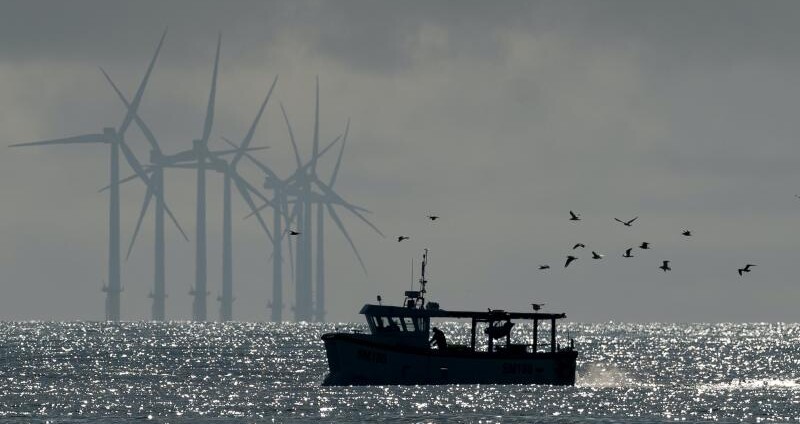Mass. vessel owners and fishing permit holders can now enroll in a compensation program to cover losses caused by the construction and operations of wind farms. Fishermen who are sharing the waters with Vineyard Wind may be eligible for funds through the Fisheries Compensatory Mitigation Program. The program is through the farm’s developers and offers $19.1 million for Mass. Fishermen and a combined $7.5 million for fishermen from other states who have routinely fished the same area in recent years.
To be eligible, fishermen must show they fished within the project’s lease area for at least three years between 2016 and 2022. The Cape Cod Times shared that though the funds are meant to bring relief to those working on the water already limited by regulations and allowable catch volumes, fishermen have raised many questions and criticism that there isn’t enough funding, the eligibility criteria are too limiting, and the program doesn’t take into account the effects fishermen who work outside of the lease area may experience.
The Vineyard Wind project is under construction 15 miles south of Martha’s Vineyard and is planned for a nearly 261-square-mile lease area. Activist groups and fishermen have opposed offshore wind development and have insisted that the significant number of whale deaths on the East Coast can be correlated to survey and construction work on energy projects, such as Vineyard Wind.
The New England Fishermen’s Stewardship Association (NEFSA) and Responsible Offshore Development Alliance (RODA) also have serious questions about how offshore wind activity is connected to the spikes in whale mortality throughout the Atlantic.
Crista Bank, fisheries manager for Vineyard Wind, shared that while fishing continues to be allowed in the area and will remain an authorized use even when the project is complete, it’s recognized that fishermen do face interruptions to their routines that could translate to losses in landings.
“They’re definitely going to be impacted during construction,” Bank explained further. There will be temporary closures to fishing around areas where turbines are actively being erected. She acknowledged there could be disruptions to the sound of boats and machinery, and later, fishermen must adjust to fishing within the wind farm if they are comfortable doing so.
The Cape Cod Times also reported that Bank said that they should reduce how much territory they cover or move on to other areas.
“They don’t need to show that they have an economic loss to be eligible for compensation, and they can still fish in the area even if they are also receiving compensation,” said Banks.
The Cape Cod Commercial Fishermen’s Alliance board shared that most of the fishing in the lease area is done with draggers. Fishermen remain wary of towing nets and placing gear within the area due to the high-voltage cables buried at least five feet deep connecting the turbines and seabed changes due to weather and tides. Eric Hesse, chairman of the Alliance, shared with Cape Cod Times, “Who knows how the fishery may be affected? It’s a sticky thing, and a lot of people are upset.”
In addition to Vineyard Wind, the Bureau of Ocean Energy Management had recently announced the finalization of a wind energy area, a two-million-acre area for wind construction in the Gulf of Maine. Dustin Delano, chief operating officer at NEFSA, said, “We have one Gulf of Maine. We have one chance at this, once shot at this. As soon as you go in there, destroy things. It’s destroyed for good.”







